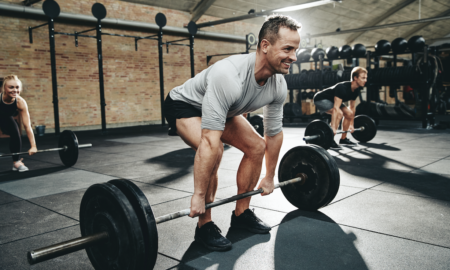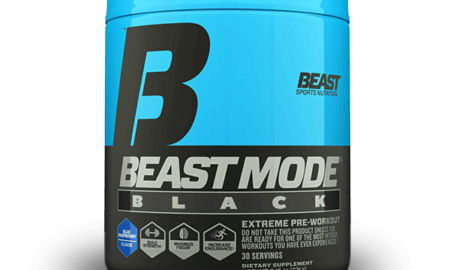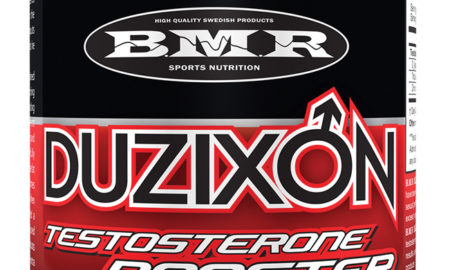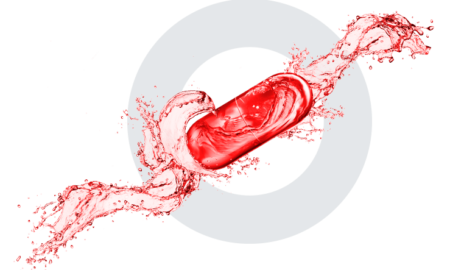 Beginning in the late 1990s, a strange phenomenon became apparent in professional bodybuilding contests. While the competitors were all in superlative condition, when they turned to the side for a pose, their abdomens protruded in a manner similar to that of a pregnant woman. Yet, when they flexed their abs, they all had deeply etched abdominal-muscle definition. Whatever was causing those protruding guts couldn’t be fat. So what was it?
Beginning in the late 1990s, a strange phenomenon became apparent in professional bodybuilding contests. While the competitors were all in superlative condition, when they turned to the side for a pose, their abdomens protruded in a manner similar to that of a pregnant woman. Yet, when they flexed their abs, they all had deeply etched abdominal-muscle definition. Whatever was causing those protruding guts couldn’t be fat. So what was it?
Various theories have attempted to explain the bulging bellies now commonly seen on many pro and even amateur bodybuilders. Some attribute the look to too much growth hormone.
The primary anabolic product of GH is insulinlike growth factor 1, which is produced in the liver (and also locally in exercised muscle). There are many receptors in the gut for IGF-1; when they are activated, the affected organ gets larger. Consequently, many explain the protruded abdomen as resulting from IGF-1 stimulation due to heavy GH use. The enlarged organs simply push out the gut.
In addition, the arrival of the bloated-gut look in bodybuilding coincided with the coming of large-scale use of insulin. Bodybuilders in the Arnold era never used insulin, and bloated guts were as rare as unicorns on Broadway in those days. When you had a bloated gut in the ’70s, you were fat. Period. Back then, insulin was used for its primary medical purpose: to treat diabetes. As such, the only bodybuilders likely to use insulin were those who had type 1 diabetes, which is characterized by a loss of cells in the pancreas that produce insulin.
Why would healthy men not suffering from diabetes ever inject insulin? It has several properties that are attractive in terms of bodybuilding. For one thing, it’s considered an anabolic hormone. Insulin stimulates the entry of amino acids into muscle, where they are used for muscle protein synthesis, the underlying stimulus for growth. In fact, insulin promotes muscle protein synthesis only in the presence of a high concentration of amino acids.
Most of the time insulin is more involved in anticatabolic effects. It slows the breakdown of muscle, a significant effect because the body is in a constant struggle between anabolic and catabolic elements. If a substance such as insulin blunts the catabolic effects, the anabolic effects dominate, and muscle growth ensues. So in that sense insulin is indirectly anabolic. Some scientists refer to the role of insulin in muscle growth as “permissive,” meaning that its presence favors anabolic effects, although it doesn’t itself stimulate them.
The influence of insulin on muscle is apparent in what’s known as the “insulin resistance of aging.” While most cases of insulin resistance, which is considered a precursor of diabetes (it’s often called “prediabetes”), are related to excess bodyfat, another type of insulin resistance can occur in older people that is not related to bodyfat. It’s is caused by a gradual loss of muscle, and it becomes a classic vicious cycle, as the increased insulin resistance leads to even more muscle loss. The loss of insulin activity encourages increased muscle loss, since as noted, insulin potently prevents muscle breakdown. Studies of older people who have been diagnosed with age-related insulin resistance show that if they get a dose of insulin greater than what a meal would produce, the muscle loss stops.
What bodybuilders have empirically discovered is that when used with other anabolic drugs, particularly anabolic steroids and growth hormone, insulin provides synergistic anabolic effects. For one, it blocks the primary side effect of using large doses of growth hormone, namely high blood glucose, or hyperglycemia. Excessive blood glucose can eventually cause the pancreatic cells that produce insulin to burn out, resulting in diabetes. That has sometimes happened to those suffering from acromegaly, a condition caused by a tumor on the pituitary gland that leads to excessive release of growth hormone. But when insulin is used in conjunction with GH, the high blood glucose release is tempered by the insulin. Insulin also works with GH and steroids to promote amino acid entry into muscle for use in muscle protein synthesis, and it also triggers the enzyme that triggers the synthesis of muscle glycogen, which stores water in muscle, producing a “fuller” appearance.
One danger of using insulin for bodybuilding purposes is that besides its effects in promoting muscle growth, it is also the most potent lipogenic hormone in the body. In the presence of excess calories, especially those derived from simple, or high-glycemic-index carbohydrates, it triggers the production of bodyfat. Even so, it’s a myth that insulin alone does that. You have to eat too many calories. Growth hormone opposes the fat-stimulating effects of insulin, as do anabolic steroids—another reason for combining that trio of anabolic hormones.
Still, it’s not as simple as it appears. Using insulin is the proverbial taking the tiger by the tail. Used improperly, in excessive doses, it can cause side effects ranging from fainting to slipping into a coma. Several bodybuilders have passed out after injecting too much insulin or using it without carbohydrate. One or two have even progressed to short-term comas. A 1997 case study published in the British Medical Journal documented the case of a 21-year-old male bodybuilder who injected too much insulin, which resulted in severe brain damage. Another case reported in 1994 involved a 19-year-old bodybuilder who injected 320 units of insulin, a massive dose, which led to hypoglycemia—low blood sugar—severe enough to cause convulsions.
The most recent case in the medical literature involved a 31-year-old male bodybuilder on a steroid regimen who added insulin to the program. He was rushed to the emergency room after being found unconscious.
When I spoke with Tim Belknap, who won the AAU Mr. America title in 1981 and the NABBA Mr. Universe in ’85, about insulin use in bodybuilding, he was aghast. Tim had type 1 diabetes, which he acquired as a child and which required him to take insulin injections. “I would do anything I could to get off insulin, and these guys are purposely injecting it?” he asked incredulously. Tim went on to predict future health problems for those “stupid enough to use insulin,” noting how hard it was to control the effects of insulin over time.
While the use of insulin in bodybuilding is questionable at best, its use by nondiabetics who are not interested in competition is nothing short of mind-boggling. Yet, according to a recent survey conducted over the Internet, many who use insulin do not even compete.1 The survey was conducted on various Web sites that have discussion boards or forums related to bodybuilding, weightlifting and anabolic steroids (terrible info on those sites, by the way). The survey was narrowed to 41 users of insulin and various other anabolic drugs. The typical insulin user was found to be a white male, average age 30, who classified himself as a “recreational exerciser,” which means that he doesn’t compete and has no interest in it.
Recreational exercisers represented 47.5 percent of the respondents, and 95.1 percent of them also used anabolic steroids. Most expressed an interest in gaining weight. Of those who used insulin, 35 percent were competitive bodybuilders, 10 percent were athletes, and 7.5 percent were strength athletes—powerlifters and Olympic lifters.
Most of those using insulin used the short-acting, or regular, insulin, such as Lispro, and none used the longer-acting forms, which are associated with a higher rate of side effects. The average dose was seven units, and it was used once a day, usually accompanying a postworkout meal. It was most commonly injected into the abdomen.
The most common side effect reported was low blood sugar, which affected 56.8 percent of the respondents. One person reported becoming unconscious after injecting insulin, and most of the respondents were concerned about possible adverse effects from insulin use. The insulin and needles were easily obtained from pharmacies and Internet suppliers. None of the users bothered to check their blood glucose with a glucose meter.
The fact that the majority of respondents to this survey were not competitors and had no apparent interest in competing is both alarming and revealing. They got most of their information from anabolic-related Web sites and forums, which are notoriously inaccurate. Still, the fact that they were concerned about possible side effects shows that they were aware of the power of insulin.
I suspect that many heard or read about the use of insulin by pro bodybuilders and figured that it might represent a shortcut to getting bigger, especially when used in conjunction with steroids and GH. They aren’t considering the bloated-gut look that will likely occur with long-term use of GH and insulin. In addition, recent studies have linked high blood insulin to not only more rapid aging but also higher rates of various types of cancer. Insulin, along with IGF-1, is known to promote cancer, and insulin itself is considered a primary culprit in some types of colon cancer.
What makes the use of insulin by noncompetitors even more dubious is that you can safely and effectively get all the anabolic benefits of insulin through nutrition. A technique as simple as taking in a postworkout whey-and-simple-carb drink can boost insulin nearly 40 percent above baseline, comparable to injecting insulin but without the possible side effects. These people need to stop listening to the nonsensical “bro-lore” delivered on Internet forums and instead study nutrition to find means of stimulating maximum anabolic effects in muscle. That way they will have the best of both worlds: good health and larger muscles with none of the risks of using insulin. For more details on precisely how to do it, check out my e-book Natural Anabolics, available at www.JerryBrainum.com.
Editor’s note: Jerry Brainum has been an exercise and nutrition researcher and journalist for more than 25 years. He’s worked with pro bodybuilders as well as many Olympic and professional athletes. To get his new e-book, Natural Anabolics—Nutrients, Compounds and Supplements That Can Accelerate Muscle Growth Without Drugs, visit www.JerryBrainum.com. IM
1 Ip, E.J., et al. (2012). Weightlifting’s risky new trend: A case series of 41 insulin users. Current Sports Med. 11:176-179.




















You must be logged in to post a comment Login